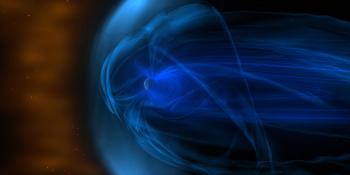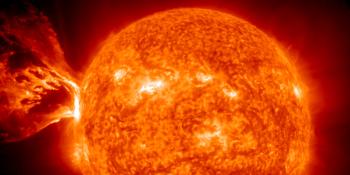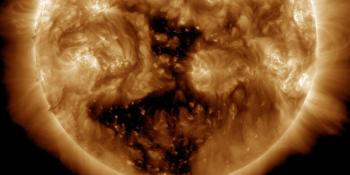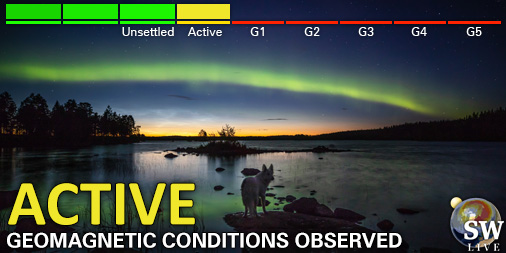Coronal hole faces Earth
Monday, 24 March 2025 16:59 UTC
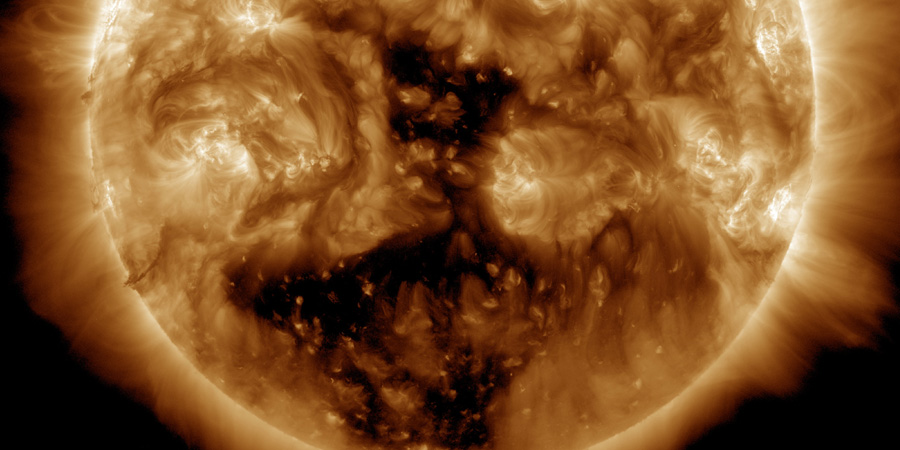
The anticipated strong G3 geomagnetic storm watch never materialized as the coronal mass ejection that was supposed to arrive early yesterday didn't arrive until today just past midnight UTC. The impact was very lackluster with the Bt (total strength of the IMF) increasing to a moderate 15nT at best and the solar wind speed reaching just 420km/s. A far cry from the anticipated 700 to 800km/s. That once again goes to show how hard it is to forecast space weather events and any resulting geomagnetic conditions. We remain under the influence of the CME and high latitude sky watchers should remain alert for some nice aurora displays but middle latitude sky watchers will probably have to wait for the next opportunity.
However, we can all dry your tears as we have yet another solar feature on the earth-facing disk today which is very much of interest. A large coronal hole is facing our planet today and this has to be the largest coronal hole in quite some time as I do not remember a coronal hole of this size facing our planet in many months. This coronal hole is located in the Sun's southern hemisphere but does cross the solar equator which means the solar wind stream will likely have a significant influence on the solar wind environment around our planet.
Minor G1 to moderate G2 geomagnetic storm conditions (Kp5-Kp6) are very much possible when the CIR (bunched up solar wind structure ahead of the high speed solar wind stream) arrives which could be late on 25 March (Tuesday) or early on 26 March (Wednesday). To learn more about coronal holes be sure to check out our help article.
A transequatorial coronal hole is facing Earth. Enhanced solar wind could arrive in ~3 days - Follow live on https://t.co/bsXLidnzGh pic.twitter.com/Hj9nn5Dc0w
— SpaceWeatherLive (@_SpaceWeather_) March 24, 2025
Thank you for reading this article! Did you have any trouble with the technical terms used in this article? Our help section is the place to be where you can find in-depth articles, a FAQ and a list with common abbreviations. Still puzzled? Just post on our forum where we will help you the best we can!
Latest news
Latest forum messages
Support SpaceWeatherLive.com!
A lot of people come to SpaceWeatherLive to follow the Sun's activity or if there is aurora to be seen, but with more traffic comes higher server costs. Consider a donation if you enjoy SpaceWeatherLive so we can keep the website online!

Latest alerts
04:15 UTC - Geomagnetic activity
Active geomagnetic conditions (Kp4) Threshold Reached: 03:57 UTC
02:30 UTC - Hemispheric Power Index
The OVATION model predicts the Hemispheric Power Index to reach 50GW at 03:23 UTC
Wednesday, 16 April 2025
21:45 UTC - Geomagnetic activity
Minor G1 geomagnetic storm (Kp5) Threshold Reached: 21:36 UTC
21:00 UTC - Geomagnetic activity
Severe G4 geomagnetic storm (Kp8) Threshold Reached: 20:55 UTC
19:45 UTC - Geomagnetic activity
Strong G3 geomagnetic storm (Kp7) Threshold Reached: 19:25 UTC
Space weather facts
| Last X-flare | 2025/03/28 | X1.1 |
| Last M-flare | 2025/04/15 | M1.2 |
| Last geomagnetic storm | 2025/04/16 | Kp8- (G4) |
| Spotless days | |
|---|---|
| Last spotless day | 2022/06/08 |
| Monthly mean Sunspot Number | |
|---|---|
| March 2025 | 134.2 -20.4 |
| April 2025 | 120.5 -13.7 |
| Last 30 days | 118.3 -22.1 |
